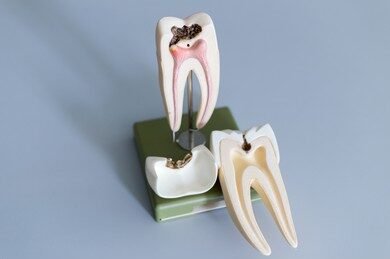Precision and Expertise: Unveiling the Process of Surgical Extraction.
Surgical extraction is a dental procedure that involves the removal of a tooth, typically when it cannot be easily extracted using routine methods. While most tooth extractions are straightforward, situations may arise where surgical intervention is necessary for a variety of reasons. This article explores the intricacies of surgical extraction, shedding light on when it’s required, the procedure itself, and the crucial role it plays in maintaining oral health.
To Know More About it Please Click Here
When is Surgical Extraction Necessary?
- Impacted Teeth:
- Wisdom teeth, or third molars, are commonly impacted, meaning they do not fully emerge from the gum line. Surgical extraction may be necessary to address complications associated with impacted wisdom teeth, such as pain, infection, or damage to adjacent teeth.
- Broken or Fractured Teeth:
- Teeth that are broken or fractured at or below the gum line may require surgical extraction, especially if the remaining structure cannot be easily grasped with forceps.
- Ankylosed Teeth:
- Ankylosed teeth are fused to the surrounding bone, making them difficult to extract conventionally. Surgical intervention may be necessary to carefully separate the tooth from the bone.
- Root Tips Left After Extraction:
- In some cases, a portion of a tooth’s root may break during a routine extraction. Surgical extraction becomes necessary to remove the remaining root tips and prevent potential complications.
The Surgical Extraction Procedure
- Assessment and Planning:
- Before the surgical extraction, the dentist or oral surgeon evaluates the patient’s dental and medical history, performs a thorough examination, and often takes X-rays to assess the tooth’s position and surrounding structures.
- Anesthesia:
- Local anesthesia is typically administered to numb the affected area and ensure the patient’s comfort during the procedure. In some cases, conscious sedation or general anesthesia may be recommended.
- Incision and Bone Removal:
- A small incision is made in the gum to expose the tooth and surrounding bone. If necessary, a portion of the bone may be removed to access the tooth more easily.
- Sectioning the Tooth:
- In some instances, especially with impacted or complex root structures, the tooth may be sectioned into smaller pieces for easier removal.
- Extraction:
- Using specialized instruments, the dentist or oral surgeon carefully extracts the tooth. Gentle force and controlled movements are applied to minimize trauma to surrounding tissues.
- Closing the Incision:
- Once the tooth is removed, the incision is closed with stitches. In some cases, dissolvable stitches are used, while in others, stitches may need to be removed after a certain period.
Post-Surgical Care and Recovery
- Pain Management:
- Patients are prescribed pain medication and given post-operative care instructions to manage pain and reduce swelling.
- Rest and Recovery:
- Rest and avoiding strenuous activities are recommended in the initial days following surgical extraction to facilitate proper healing.
- Oral Hygiene:
- Proper oral hygiene, including gentle brushing and rinsing with a prescribed mouthwash, is crucial to prevent infection and promote healing.
- Follow-Up Appointments:
- Follow-up appointments are scheduled to monitor the healing process, remove stitches if necessary, and address any concerns or complications.
To Know More About it Please Click Here
Conclusion
Surgical extraction is a specialized dental procedure designed to address complex situations that cannot be resolved through routine extraction methods. While the prospect of surgical intervention may seem daunting, it is a crucial step in maintaining oral health and preventing complications. Dentists and oral surgeons employ precision, expertise, and modern techniques to ensure a smooth surgical extraction process and a swift recovery for their patients.








